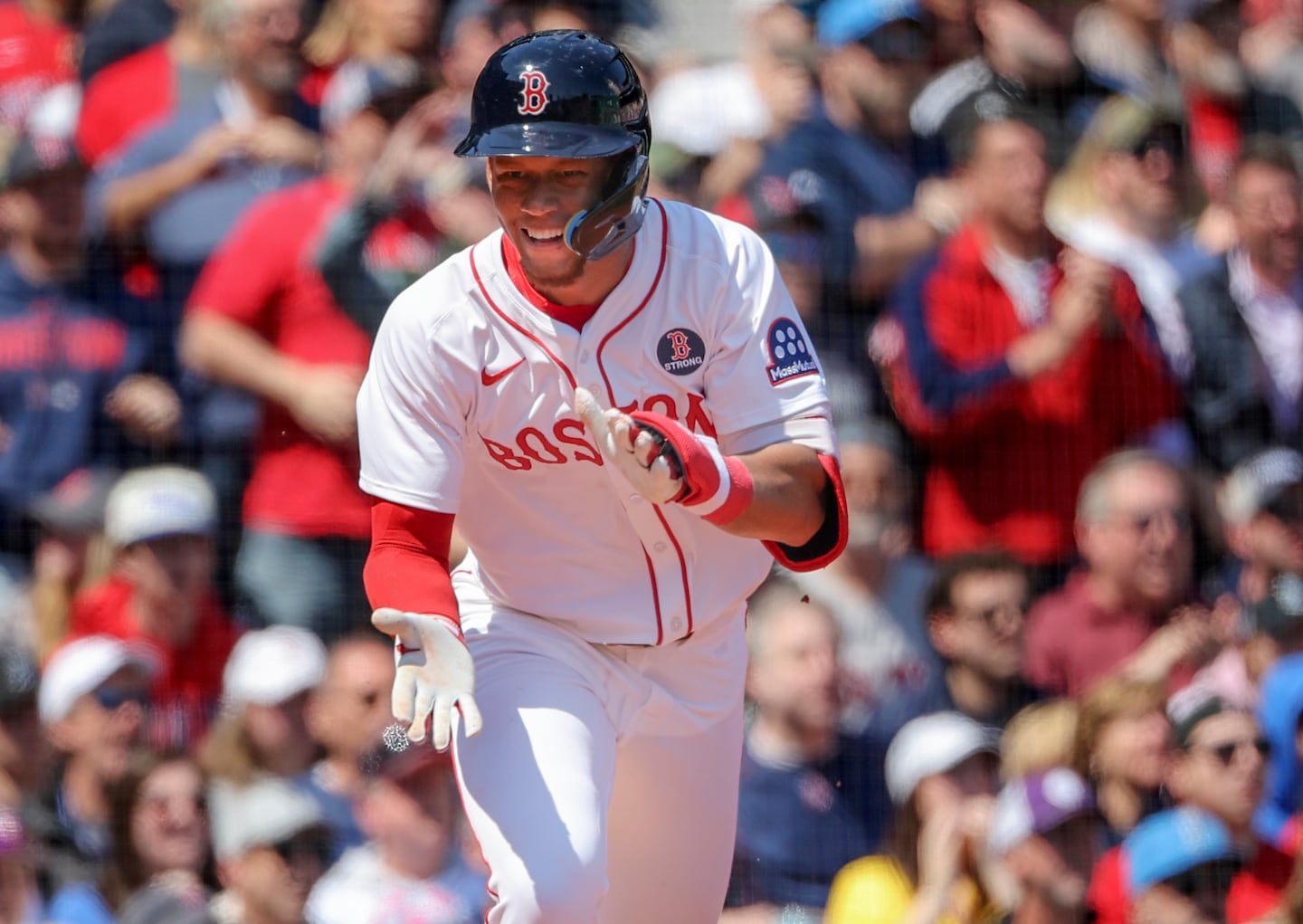The Sox CBO refers to it as “PD.” But it feels more like product R&D (research and development) for the Sox with their devotion to Driveline Baseball, the teaching technique think tank promising cutting-edge methods that the Sox have fully gotten into bed with.
From the outside, it’s difficult to pinpoint a player on the major league roster who has taken a significant leap forward because of the Sox’ player reprogramming. There’s more evidence pointing the foam finger in the other direction.
Baseball is adept at chastening hubris. Just ask the pioneer of data-determinative team-building, A’s legend Billy Beane. Mr. Moneyball was forced to admit, “My [expletive] doesn’t work in the playoffs,” as his sabermetric trend-setters could never advance to the World Series.
We’re well beyond the point of questioning analytics’ place in baseball. That information matters, and it’s embedded in the fabric of the game. But if you overdose on data or become blinded by it, then it can go from a competitive advantage to a one-size-fits-all crutch.
It’s worth noting that for all of the Sox’ investment in reinventing the wheel, their most productive players this season are good old-fashioned high-end talents. Garrett Crochet, Alex Bregman, and Aroldis Chapman weren’t created in somebody’s baseball lab.
To a degree, the same goes for uber-prospects Marcelo Mayer and Roman Anthony. Mayer was the fourth overall pick in 2021. Anthony received the second-highest signing bonus among 2022 second-rounders ($2.5 million). His bonus was higher than some first-round picks, including Red Sox first-rounder Mikey Romero.
The Red Sox guzzled too much of their “PD” Kool-Aid in the spring. There was a story from estimable ESPN baseball writer Jeff Passan chronicling how the Red Sox were revolutionizing (my words, not his) hitting in the batting cages in Fort Myers, Fla., as southwest Florida became the Silicon Valley of swings.
Passan wrote, “the future of hitting is playing out in real time.” He also penned “The Red Sox believe this is just the beginning … and that their approach to hitting will create a pipeline of prospects.”
After earning his extension, Campbell parroted the company line and credited the Sox player development apparatus: “[Player] development helped me become a great player.”
This is what the Sox were selling. They had cracked the code.
When Campbell, named the American League Rookie of the Month for March/April after slashing .301/.407/.495 with four home runs, was feted at Fenway with his premature validation contract, Breslow took a victory lap of Boston Marathon length.
“Kristian was not drafted in the first round. He wasn’t a top prospect upon entering the organization. What he was was a good player who made himself a great player because of his work ethic and diligence and open-mindedness and attitude,” said Breslow.
“So, in many ways, he is a prime example of what’s possible when great scouting meets great development around a player who prioritizes maximizing his potential over everything else.”
Such presumptiveness hasn’t aged well. But there’s also reason to be wary moving forward that the Sox might have a player engineering defect.
The centerpiece of the polarizing Rafael Devers trade is young lefthander Kyle Harrison. The Sox plan to get under the hood with Harrison to fine-tune him into the pitcher he was billed as rising through the San Francisco Giants system. Baseball America ranked Harrison the No. 11 prospect in 2024.
In Harrison’s first two starts for Worcester, he is 0-2 with a 7.88 ERA, with three homers allowed and just six strikeouts in eight innings. Hitters have an OPS of 1.067 against him.
Perhaps, most alarming is the tale of an abandoned Red Sox project, Quinn Priester. Like Harrison, Priester, 24, was once a premium prospect. He’s only one year older.
Breslow traded Priester to the Milwaukee Brewers in April, less than a year after acquiring him at last July’s trade deadline.
On the same day that Breslow banished Devers to the Bay, Priester pitched six innings of one-hit ball. On June 28, Priester pitched seven shutout innings of one-hit ball, striking out a career-high 11 batters against the Colorado Rockies.
That sounds like the type of starter the Red Sox could use with Walker Buehler scuffling and the back of the rotation listing.
The Red Sox asked Priester, a ground ball pitcher, to focus more on increasing velocity and missing bats, especially with his slider. According to one detailed report out of Milwaukee from the website Brewer Fanatic, the Brewers have simplified matters for Priester by embracing the sinkerball pitcher that he is, moving him to the middle of the rubber, and telling him to focus on throwing his sinker/slider mix without chasing extra velocity.
Considering where he was at when the Brewers acquired him, Quinn Priester’s development is nothing short of incredible, frankly.
11 strikeouts across 7 innings with 1 hit allowed. He finishes his day with three straight curveballs for whiffs, and a career-high 20 for the day.
— Curt Hogg (@CyrtHogg) June 28, 2025
The results: 6-2 with a 3.35 ERA, entering July 4.
It’s possible to tweak players. Some franchises have displayed a penchant for helping players unlock their best versions. The Tampa Bay Rays, Houston Astros, and Cleveland Guardians all boast proven data-infused pitching pedagogies that fuel success. Emulating that is one of the reasons the Sox hired Breslow.
But tweaking is different from building in your predetermined image. Belief and conviction are different from zealotry and hubris.
Good players are not lab experiments. They’re more than parts to be fashioned for Fenway.
Christopher L. Gasper is a Globe columnist. He can be reached at christopher.gasper@globe.com. Follow him @cgasper and on Instagram @cgaspersports.

